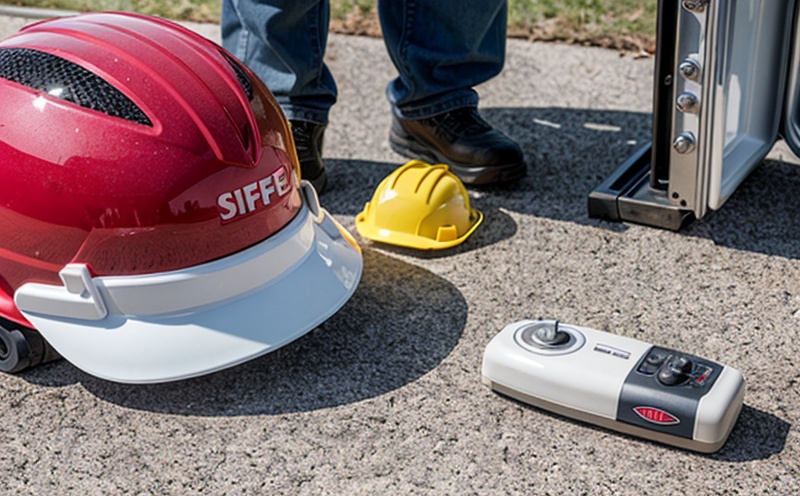ISO 18841 Marine Fire Extinguisher Performance Testing
The ISO 18841 standard specifies the performance requirements and testing methods for marine fire extinguishers. This standard ensures that these critical safety devices meet stringent criteria to protect crew and passengers aboard ships in various emergency scenarios.
Testing under this standard is essential for compliance with international regulations such as SOLAS (International Convention for the Safety of Life at Sea). Compliance ensures that vessels are equipped with fire extinguishers capable of effectively combating fires, thereby minimizing risk during maritime operations. The testing process evaluates a number of key factors including discharge time, spray pattern, and extinguishing efficiency.
The testing procedure involves simulating real-world conditions where the extinguisher is subjected to environmental challenges like temperature variations and humidity. This ensures that the product performs reliably under all expected operating conditions at sea. Additionally, tests are conducted in controlled laboratory settings to verify the extinguisher’s spray pattern, which must cover a specific area for effective firefighting.
Once testing begins, the fire extinguisher is placed inside a specially designed apparatus capable of simulating the environment it would encounter during use. The apparatus controls temperature and pressure conditions to replicate the marine environment accurately. After activation, detailed measurements are taken of the discharge time and spray pattern to ensure they meet the specified criteria.
The acceptance criteria for ISO 18841 are critical in determining whether a fire extinguisher can be certified as compliant. The standard requires that the extinguishing agent must not only put out the flame but also maintain an effective cooling effect over time, ensuring that any remaining embers do not reignite.
For R&D engineers and quality managers, understanding these testing procedures is vital for developing reliable products. It provides a clear roadmap on how to design, manufacture, and test fire extinguishers to ensure they meet the required standards. Compliance with ISO 18841 also enhances the reputation of manufacturers by demonstrating their commitment to safety and reliability.
Why It Matters
The importance of ISO 18841 testing cannot be overstated, especially in the context of marine environments where fire hazards are a constant threat. Compliance with this standard ensures that fire extinguishers perform reliably under extreme conditions, contributing to maritime safety and reducing risks.
Benefits
- Enhanced Safety: Ensures that critical safety equipment functions as intended in emergency situations.
- Regulatory Compliance: Helps manufacturers meet international standards set by SOLAS and other maritime regulations.
- Improved Reputation: Demonstrates a commitment to quality and reliability, enhancing the reputation of the manufacturer.
Customer Impact and Satisfaction
- Increased Trust: Customers can be assured that the fire extinguishers they purchase are tested rigorously to ensure safety.
- Peace of Mind: Knowing that critical safety equipment meets stringent standards provides relief and confidence in maritime operations.





